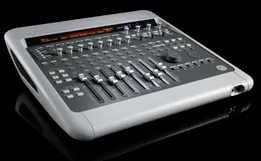Discover the powerful world of Pro Tools, a leading digital audio workstation crafted by Avid Technology. Designed for both Windows and macOS, Pro Tools is the go-to choice for music creation, sound design, and audio post-production. This versatile software can function independently or work seamlessly with external analog-to-digital converters and PCIe cards equipped with digital signal processors. These DSPs enhance your system’s capabilities, allowing for real-time effects processing and minimizing latency for a smoother audio experience. Pro Tools not only acts as a multitrack recorder and mixing console but also offers advanced digital features like non-destructive editing, track compositing, and pitch shifting. With a user-friendly timeline interface, you can easily manage audio, MIDI, and video tracks while applying effects and virtual instruments in real-time. Supporting various audio bit depths and sample rates, Pro Tools accommodates diverse audio formats and even allows for video file manipulation. With features like time code, elastic audio, and surround sound mixing, Pro Tools delivers an unparalleled audio production experience. In a recent shift, Avid transitioned Pro Tools to a subscription model, offering flexible plans to suit different needs, including a free version for newcomers. Embrace the future of audio production with Pro Tools and unleash your creativity.

I always believed that an analogue mixing console was the best introduction to routing audio. This belief persisted until a student approached me after a lecture. He had observed me using an analogue console alongside a digital mixer to explain the audio routing of the digital console. He mentioned that this comparison was incredibly useful, as it helped him finally grasp the complexities of the analogue system. It appears that digital natives might not need analogue as much as I did.
However, the legacy of analogue consoles is still evident in modern DAWs. Open the Mix window in Pro Tools, and you’ll see how analogue concepts have been incorporated into software. Consoles are still prevalent in our DAWs, providing a familiar representation of signal flow. While the fundamentals of signal routing are straightforward, they can become intricate, especially with surround and immersive audio formats, which are increasingly relevant for aspiring engineers. This month’s column focuses on routing audio in Pro Tools, applicable whether you are working in stereo or Dolby Atmos.
I/O Setup Window
We’ve all encountered the scenario of opening a new session and not hearing any audio, despite observing activity on the meters. In a basic session without submixing, the quickest fix is to open the I/O Setup window and click Default. This action resets all routing for the currently open tab; holding Option/Alt will reset all tabs.
Typically, the issue arises because the output mix path needs adjustment. Instead of resetting everything, you can selectively change the tracks routed to the missing output bus. Select all tracks routed to the main output, excluding those directed to submixes, and re-route only the selected tracks in one operation using the handy Option+Shift modifier. This modifier applies changes only to the selected tracks.
If you find yourself in a session where you can’t hear anything, use the Select Assignments To Mix Bus option to route the selected tracks to an output bus on your system.
Other useful modifier combinations include Option/Alt for applying changes to all tracks, and combining Command with Option to cascade input or output assignments incrementally across a series of busses, inputs, or outputs. Adding Shift to Option and Command applies the operation solely to the selected tracks, which often proves more practical than cascading across all tracks. This…


0 Comments